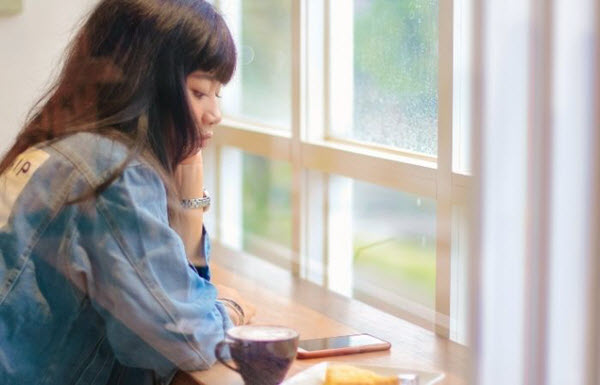The Hidden Cost of Social Distancing

I’ll admit it, when COVID-19 came to town this past March I was secretly excited that we were ordered to quarantine. Finally, I thought, a legitimate excuse to hunker down at home and stop the hustle!
Work slowed down. I embraced my role as chief laundry-doer-dinner-maker-house keeper. I created a cleaning schedule, tackling one section of the house each weekday. I planned all the meals. Once a week I put on my mask and headed to the grocery store to stand in line and wait for my turn to head inside.
With my freshly wiped down cart, I social-distance-shopped while dozens of personal shoppers walked through the aisles, glancing at their phones and filling shopping carts with someone else’s grocery list.
Life felt simple. Every day felt like a staycation. As someone who regularly practiced yoga at a local studio, I was thrilled to be able to rotate through a roster of classes with my favorite instructors, all in the comfort of my own home.
I was so happy and content—until I wasn’t.
Over the last six months of self-imposed quarantine I have gone from feeling secretly validated as a closet introvert, to feeling trapped, aimless, purposeless, disconnected and depressed.

I know that I am not the only one.
We’ve been asked to stay home in order to stay healthy and to stop the spread of the coronavirus. But a healthy society requires more than the physical health of its members. A healthy society requires its members to be healthy in body, mind and spirit.
Tragically, our collective society is experiencing an erosion of mental and emotional health, because isolating ourselves, or limiting healthy social interaction, has negative consequences, including the manner in which it impacts our neurobiology.
Research shows that social isolation and perceived loneliness are associated with activation of the hypothalamic-pituitary-adrenocortical (HPA) axis and the sympathetic nervous system (SNS), otherwise known as the stress response (fight/flight/freeze). This response is designed to provide us with the ability to quickly defend ourselves from harm (fight), or to help us escape danger (flight).
In moments of perceived danger, our brains and bodies are turbo charged with hormones and biochemicals that are very useful in times of threat or danger. But when this system is chronically activated, as a result of social isolation, it turns from helpful to harmful.
The global pandemic brings no shortage of stressful realities and has impacted every one of us. Loss of jobs and incomes are creating financial stresses. Those who are employed as essential workers are facing health risk stressors. Those who have been impacted by the virus experience the stress of illness and loss.
And all of us are (ideally) practicing social distancing as the new public health initiative, which means that we are all at risk of experiencing the negative impact of the associated chronic stress. These impacts can be felt in a variety of ways, ranging from constant fear or anxiety, to general malaise, to depression, which can cause us to feel constantly exhausted, stuck, unmotivated or immobile (freeze).
Engaging in healthy social interactions does much more for us than we might think. When we have meaningful connections with others, we experience important human emotions like empathy and compassion (which we do when we reach out to someone for support, or lend an ear to someone we care about during a hard time).
These social/emotional experiences stimulate the production of important hormones and biochemicals like oxytocin and vasopressin, which can be mitigators to the development of stress and stress-related issues like depression and anxiety. Unfortunately, the fewer healthy social interactions that we have, the less our brain is able to produce these “feel good” hormones, further heightening our risk or of developing depression and anxiety.
As our mental health erodes, we become susceptible to developing social anxiety or social dysfunction, leading us to isolate further. This becomes a self-perpetuating cycle that feeds itself. Over time we feel like our feet are stuck in quicksand. Reaching out for connection feels impossible, even if we know it’s the helpful thing to do.
If all these weren’t concerning enough, continued isolation and the associated continuous activation of the HPA axis (stress) creates inflammation in the body. Chronic inflammation is the source of many autoimmune and physical ailments ranging from arthritis to cancer. The negative health implications of prolonged social isolation could be very dire, and won’t be fully recognized for years to come.
What to do?
It’s important to recognize how you are feeling (in your body), even if you don’t necessarily know what you are feeling (in your mind). To become aware of the physiological effects of the chronic stress associated with long-term social isolation, it helps to turn your awareness inward—to your body.
Distressing sensations in your body are the visceral impact of all those toxic stress hormones and can be felt in any number of ways, including a heavy feeling in your chest, sick feeling in the pit of your stomach or tightness in your throat. You might also notice you are experiencing any of the following:
- Shortness of breath
- Racing heart
- Jittery legs
- A general feeling of being trapped or confined
These sensations underpin emotions like fear, anger, irritation, resentment and so on. They are also a good indication that you’re experiencing a feedback loop of stress.
Practicing a variety of simple stress-reducing activities such as meditation, yoga, tai chi, qigong, and even dancing can interrupt this feedback loop. But if you feel unable to proactively engage in these types of activities (remember that quicksand feeling), simple breathing exercises (like the one described below) can be just as effective.
Breathing can be used anytime and if done correctly, your nervous system will shift from the high rev SNS to the calming and relaxing parasympathetic nervous system (PNS). It’s like turning the flame on a stove from all the way high, to a manageable simmer. If done regularly, your body will eventually learn how to stay calm and relaxed on its own.
Balloon Breath

Sit or lay down. Place one hand on your belly and one hand on your chest. Inhale and inflate your belly and chest like a balloon (feel your hands moving as your body inflates). Exhale and let your belly and chest relax. Repeat at least ten times.
Breath and mindfulness practices are a good start for calming your body’s stress response. But to reverse the long-term negative impacts of social isolation, authentic connection with other human beings is a must.
Socializing (as we knew it) is still tightly regulated, but we can find opportunities for authentic connection with friends and family via apps like Facetime, House Party, or the video chat option on Facebook. Support groups like AA, Alanon, cancer support groups and others have all shifted to Zoom, allowing us access from anywhere in the world.
These are some ways in which we can connect with other humans, express care, empathy and compassion, and feel the benefit of all those good biochemicals.
As for me, I’ve been facilitating online TIMBo (trauma informed mind body) groups for women since mid-March. The connection I feel with these women is surprising and remarkable. We may not be in the same room, but over an online platform we share our thoughts, feelings, and struggles.
We connect, resonate, feel compassion, empathy, joy and, sometimes, grief. I thank technology, this program, and these women every day because without the opportunity to connect in such a meaningful way, I’m quite sure the world we’re living in would get the best of me.
So if you’re feeling off, increased social isolation might be at the root. Be proactive, see what’s available, find something that resonates, and start connecting.
We all need each other right now to help us get through these uncertain times. Our health, and the health of our society really does depend on it.
To learn more about TIMBo, go to www.timbocollective.org. Suzanne’s award-winning book, There is Nothing to Fix: Becoming Whole through Radical Self-Acceptance, is available in paperback, kindle, and audiobook.

